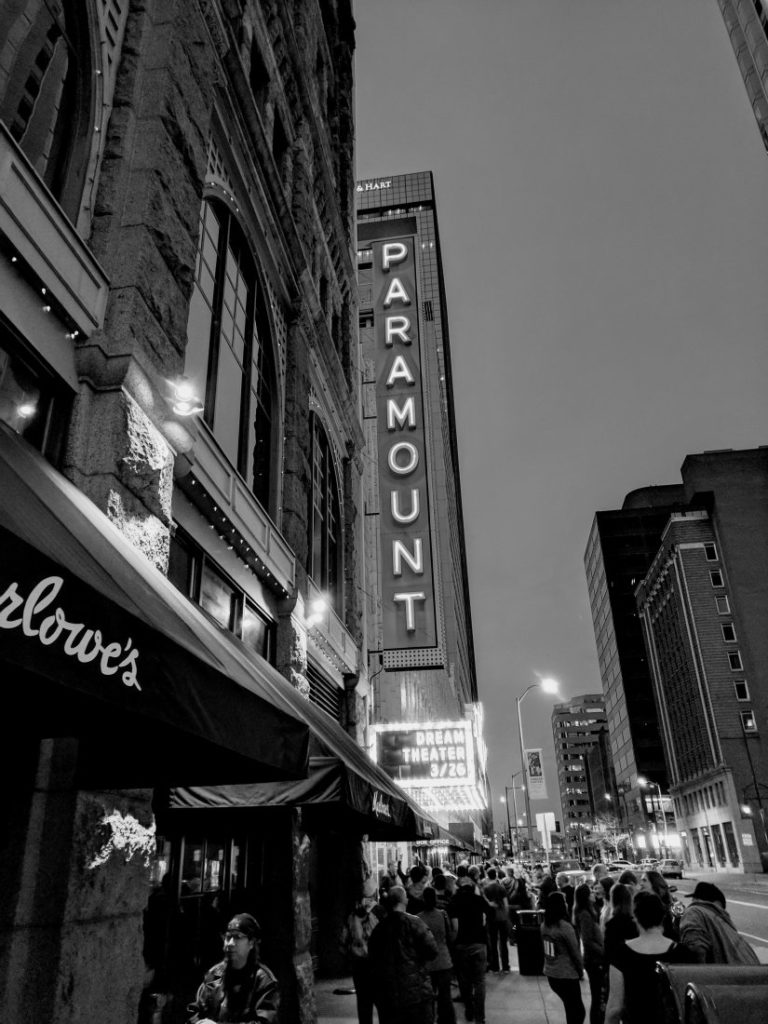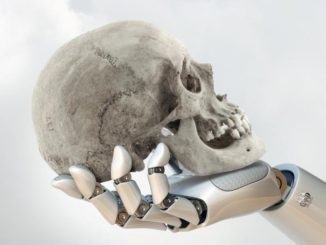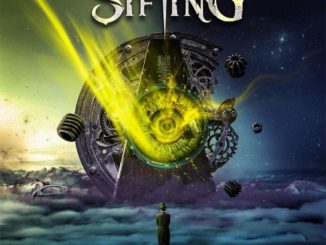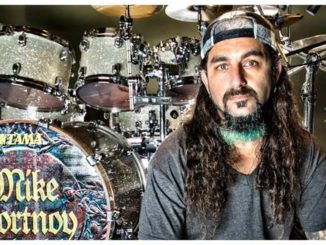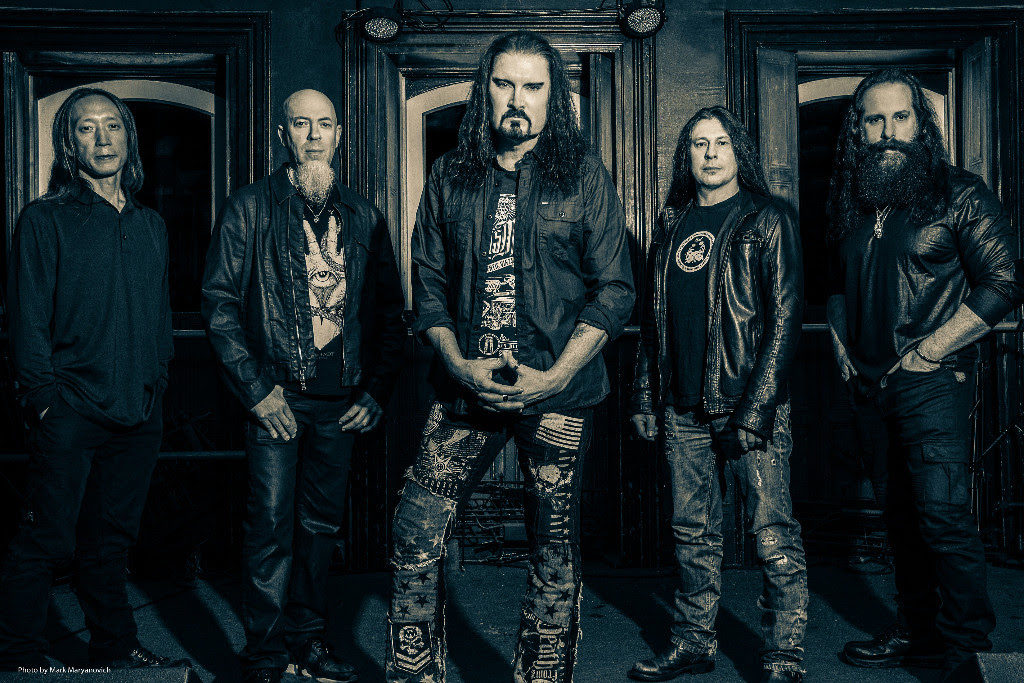
Five shows into a lengthy tour of North America and Europe, Dream Theater is nicely limbered up, as crisply professional as always, but radiating newfound focus on a clean and streamlined stage. The archbishops of prog metal cranked up the energy as the evening unfolded, delivering a hybrid show of new and old material to a full house of enthusiastic and knowledgeable Mile High fans, who fist-pumped and air-drummed their appreciation.
Four of the first six songs are brand new, off of their just-released new album, Distance Over TIme. Written and recorded while holed up for five months in a converted barn in the Catskills of upstate New York, and released on a new label, the prog-focused Inside Out Music, Distance represents something of an evolution for Dream Theater. It’s a turn toward simplicity and relative brevity, at least by Dream Theater standards, and as compared to other recent efforts, including the complicated double-length sci-fi epic The Astonishing. And the new release seems to reflect a new commitment to collaboration in songwriting among the band members, which hasn’t always been present over the band’s history. One senses a new cohesion, perhaps, an attempt to return to the ambition and intimacy of the 1990s, before personnel changes and market shifts and other middle-aged inevitabilities gunked things up. You can’t go back, of course, but you can produce an album that hits many of the same pleasure sensors while also allowing for artistic growth. And Dream Theater seems to have done that with Distance Over Time.
Precisely at 20:01 Mountain Daylight Time–clocks and the passage of time a consistent motif over the years in the band’s stage and liner-note iconography–the show open with “Untethered Angel,” the six-minute arpeggio-fest that was released in video teaser form some weeks before Distance dropped. It’s distinctively Dream Theater, technical and melodic and at times threatening diminished-scale chaos. But it isn’t until the second song, “A Nightmare to Remember,” off of 2009’s Black Clouds and Silver Linings, that the crowd starts really engagin. It’s a strong tune, hitching a crunchy precise John Petrucci master-riff with a melodic interlude with lyrical emphasis on “beautiful agony”. It’s tempting to assume there are just enough old-guard Dream Theater originalists in the audience–the dude with the vintage Change of Seasons t-shirt, perhaps–that the appreciation for this particular song has something to do with the fact that Black Clouds, average song length 12 minutes 30 seconds, was the last album with founding member and virtuoso drummer Mike Portnoy, who left the band in 2010 after 25 years. Nine years later, it’s a tension that still divides the fan base–can Dream Theater without Portnoy ever eclipse or even equal Dream Theater with Portnoy?–notwithstanding the technically impressive and consistently athletic drum work of Portnoy’s replacement Mike Mangini. But the atmosphere in the Paramount Theater is upbeat and gently hazy, a mix of early-years purists and younger fans who don’t remember the 1990s, and aren’t as invested in this kind of comment-board bitterness. Perhaps the schism is mending.
Me? I was one of those 1990s fans, invested enough to spend dozens of hours trying to learn John Myung’s brutal bass lines from the first two albums. When I heard the band was looking for a mob of chanting voices to add to a track on what would be its Systematic Chaos album (2007), I and four hundred like-minded others waited in line for hours on an absolutely frigid afternoon outside a recording studio on the far West Side of New York City before being turned away; they had sufficient chanters. After that I drifted away for some years. But perhaps, it occurs to me here in this old-school concert hall with the quasi-classical frescoes and sunken velour seats, it’s time to find my way back.
The riff off “Fall Into The Light,” also from the new album, sounds like vintage Metallica, and I am reminded that Dream Theater once released an “official bootleg” album in which they covered Master of Puppets in its entirety: this is one way they express their whimsical side. Next up is “Barstool Warrior,” a melodic anthem about the possibility–or impossibility–of personal change, that rallies the audience. Guitarist John Petrucci takes center stage and soars into the higher registers, leveraging tone over speed in his playing, and the band gives him the room he needs to remind everyone why he is one of the world’s greatest living guitar players. It’s an example of the band’s new turn toward simplicity, and one of the better songs on the new album. But another highlight, the last tune before the intermission, is “Pale Blue Dot,” a classic complex Dream Theater shifting-time-signature piece that stays tight even as it ratchets up the rhythmic tension to build to its lyrical climax, which asks us to consider, on this isolated little planet, who will save us humans from ourselves.
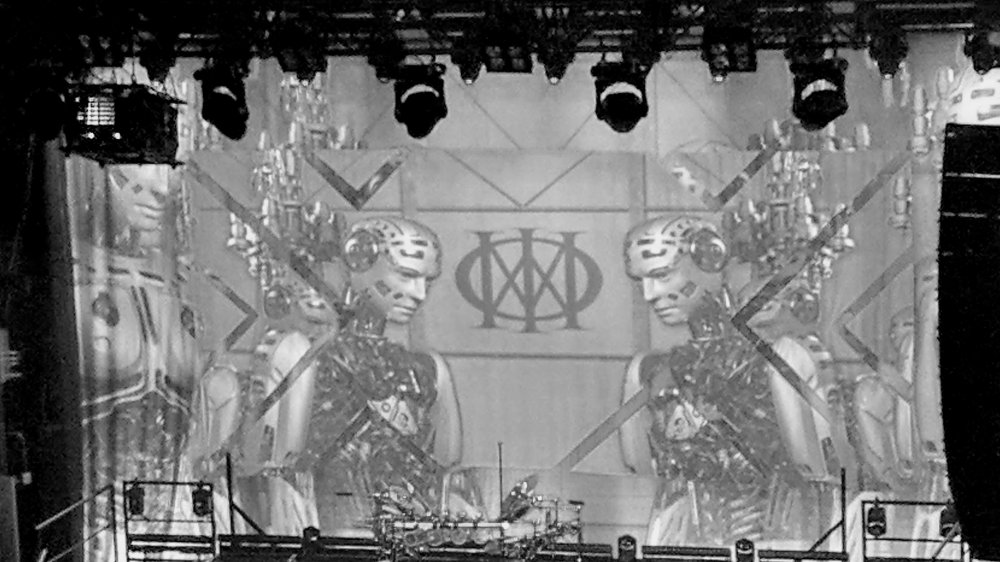
Following intermission, it’s onto the older stuff, specifically, the Metropolis Pt. 2: Scenes from a Memory album, uninterrupted, in its entirety. Despite all of the fanfare around Distance, much of the marketing has emphasized the evening as a celebration of twenty years of Metropolis Pt. 2, originally released in 1999. The band calls Metropolis Pt. 2 its first “concept album” in that all of its tracks explores different aspects of a common storyline (about a man unpacking buried trauma through regression therapy), common themes (addiction; reincarnation; regret), and recurrent musical motifs and phrases, some of which are echoes of “Metropolis Pt. 1: The Miracle and the Sleeper,” a cornerstone tune on Images and Words (1992). (I think there’s a strong case to be made that Awake (1994) was really their first concept album, but that’s a discussion for another day.) In several meaningful ways Metropolis Pt. 2 is Dream Theater’s strongest album; a masterpiece of layering and song construction that showcases each of the band members’ contributions while also becoming greater than the sum of its parts; a work of seriousness and profundity that never feels over-engineered or collapses under its own weight. Like some literary novels, Metropolis Pt. 2 can be bewildering at first. But it’s worth some sustained attention. All those Dream Theater originalists, the guys who are matching beat-for-beat of every one of Mangini’s fills with their palms on their dark-denimed knees? This album is what they are here at the Paramount Theater to witness.
Dream Theater knows this, and does not disappoint. Embracing the native intensity of the Metropolis Pt. 2 material, the band leans into dynamic shifts of tempo and texture. Singer James LaBrie, his leather trench-coat open, swaggers about, swinging a custom microphone stand inspired by the band’s beloved infinity-symbol logo. When recording the original album in 1999, LaBrie was still very much recovering from a serious vocal cord injury that affected his range as well as his confidence, so it’s heartening to see how powerful he is in the higher registers, projecting toward the cheap seats. In more plaintive moments, like the acoustic beginning of “Fatal Tragedy,” a less polished tenderness emerges. Petrucci, with his Rasputin beard and pumped-up biceps, is workmanlike and largely restrained on stage, but when you close your eyes during big songs like “Home” and “The Spirit Carries On,” you can feel him channeling the entire room’s expectant energy and pushing it right back at them through the melty heat and glassy sustain of his guitar. And Myung, the bassist and very much the glue of the band, is enjoyably discernable in the mix, allowing us to appreciate the complexity of his work.
It’s Jordan Rudess, the band’s keyboardist, that may be the most fascinating. With his tall stature, shaved head and tufty gray beard, he is an imposing presence onstage. Unlike many keyboardists, he doesn’t hide behind his equipment. Actually, his rig is custom-designed to move around with him, spinning and slanting as Rudess pounds on it like a mad scientist. For “The Dance of Eternity” and “Beyond this Life,” and elsewhere, he breaks out a giant keytar that resembles some sort of alien weapon. Metropolis Pt. 2 was the first album with Rudess in the band, but the originalists mostly love him, suggesting some flexibility to their perspective. Anyway, I can’t remember the last time I heard a keyboard player draw quite as much consistent applause over the course of an evening.
The challenge for Dream Theater, like any band that’s been around for 35 years but hasn’t given up their artistic aspirations and gone full legacy-act, is to find ways to connect the past with the present, to celebrate the classic old material while making space for the new. Maybe it helped that Metropolis Pt. 2 is itself about looking into the past to make sense of the present. Wrapping it all up with “Pull Me Under,” an old staple and the closest thing Dream Theater ever had to a major commercial hit, Colorado’s exuberant prog-metal fans went wild. The band lingered on stage, dripping with sweat, long after their instruments had been powered down and handed off. They deserved every bit of the applause. Dream Theater is off to a strong start on this tour, leading with the new to lay the groundwork for the old.
